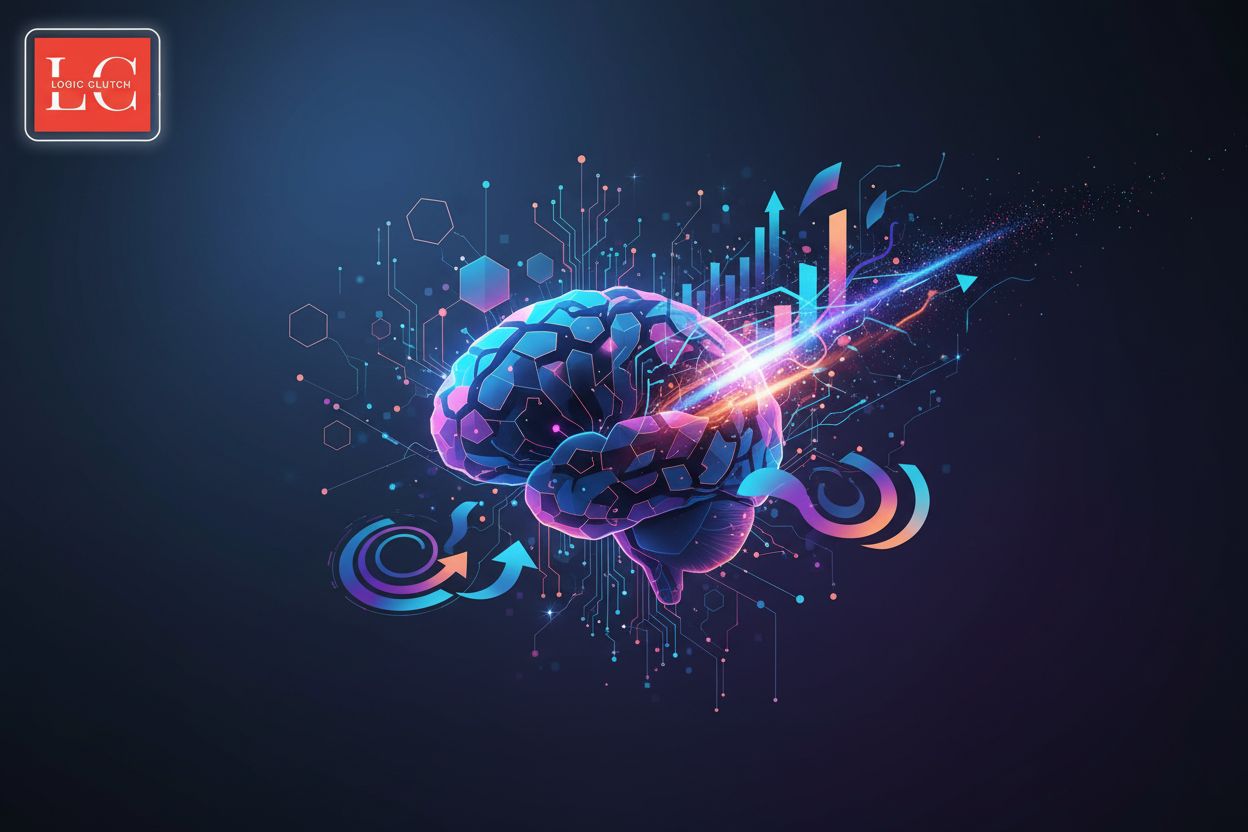Supercharge Service Chatbots Integration Strategies for Salesforce Success
TL;DR
Understanding Chatbot Integration within Salesforce
Chatbots: they're not just a fad, they're kinda becoming essential, right? What's even cooler is how they're getting baked right into platforms like Salesforce. Let's dive into why this is a big deal.
24/7 availability and instant responses: ai chatbots doesn't get tired. They can answer customer queries anytime, day or night. This is super important in today's world where customers expect instant gratification. As Krotov Studio mentions, ai chatbots can provide round-the-clock support, meeting those high customer expectations.
Handling routine queries efficiently: Chatbots can tackle repetitive questions without breaking a sweat, freeing up human agents for more complex stuff. Think about it: password resets, order tracking – the bot can handle it.
Improving customer satisfaction scores: Quick, accurate answers lead to happier customers. According to Wonderchat, AI agents can service your customers end-to-end, which can seriously boost satisfaction.
Centralized customer data for personalized interactions: When a chatbot is hooked up to Salesforce, it can pull customer data to make conversations way more personal, and relevant. No more generic answers! The bot knows who you are, and what you bought last time.
Streamlined workflows and increased agent productivity: Chatbots can automate tasks and hand off complex issues to human agents, making everyone's job easier. Agents get more time to deal with tricky problems.
Enhanced data-driven decision-making: Chatbot interactions generate data that can be used to improve service and make smarter business decisions. You can see what questions are asked most often, and tweak your chatbot or even your products accordingly.
Cost reduction through automation: AI chatbots can automate routine inquiries, which saves on staffing costs. It's about doing more with less, really.
Improved customer engagement and loyalty: Customers appreciate quick and helpful support, which builds trust and keeps them coming back. By having an AI chatbot it assures that your customer is getting the right information on time.
Actionable insights from customer interactions: Chatbots gather data from every conversation, providing valuable feedback for business improvements. It's like having a constant feedback loop.
According to Salesforce, 58% of customers now use chatbots for simple customer service tasks, a jump from 43% in 2020. That's a big leap!
All right, so, that's the lay of the land when it comes to understanding chatbot integration within Salesforce. Now, lets get into the nitty-gritty of the different integration strategies you might want to consider.
Strategies for Seamless Chatbot Implementation in Salesforce
Alright, so you're thinking about hooking up a chatbot to your Salesforce? Good call – but how do you actually do it right? It's not just plug-and-play, folks.
Here's a few things to keep in mind:
Define Clear Objectives and Use Cases: First up, you gotta know why you're even doing this. What problems are you trying to solve?
Identifying common customer pain points: What are customers struggling with? Is it difficulty in finding product information or understanding return policies?
Automating repetitive tasks: Think about those routine inquiries that eat up your team's time. Password resets, order status updates – these are perfect for bots.
Personalizing chatbot interactions: Use that sweet Salesforce data to tailor the chatbot's responses. If a customer's had issues with a specific product before, the bot can proactively offer help or solutions. For instance, a healthcare provider could use a chatbot to remind patients about appointments and provide pre-appointment instructions based on their specific medical history.
Picking the right chatbot it's like finding the right tool for the job, right?
- Evaluating integration capabilities: Can the chatbot platform play nice with your existing Salesforce setup? Does it connect easily with your service cloud, sales cloud, etc?
- Assessing customization options: Can you tweak the chatbot to match your brand's voice and style? Or is it just gonna sound like a generic robot?
- Ensuring scalability and performance: Will the chatbot be able to handle a sudden surge in customer queries during a big sale or product launch? You don't want it crashing when you need it most.
This is where you map out how the chatbot its going to actually talk to your customers.
- Mapping customer journeys: Figure out all the different paths a customer might take when interacting with the chatbot. what questions they might ask, and what actions they might want to take.
- Drafting comprehensive dialogues: Write out the actual conversations the chatbot will have. Keep it natural, helpful, and on-brand, okay?
- Testing and training the chatbot: Before you unleash it on the world, put it through its paces. Test different scenarios, gather feedback, and tweak it until it's purrfect.
Alright, now you know the basics of implementing ai chatbots in Salesforce. Next up, we'll dive into the actual development of those conversational flows.
Leveraging AI Analytics for Enhanced Data Intelligence
Did you know that ai analytics can turn your chatbot from a simple question-answerer into a powerful insights engine? It's all about tapping into that data goldmine. Let's see how.
Your chatbot is basically a customer feedback machine 24/7. The trick is to actually use all that info!
- Identifying common issues and trends: ai analytics can automatically sift through chatbot conversations. They can spot recurring questions, pain points, or popular features. For example, a financial services company might find that loads of customers are asking about mobile deposit limits. So, they could proactively update their chatbot, faqs, or even their app to address that.
- Understanding customer preferences: By analyzing what customers ask and how they interact with the chatbot, you can get a clearer picture of what they actually want. A retail business could uses this to figure out what products are trending or what kind of deals customers are most interested in.
- Monitoring key performance indicators (kpis): Keep an eye on metrics like resolution rate, customer satisfaction, and conversation length. If resolution rates are low, it could mean your chatbot isn't answering questions in a clear way and you should tweak it.
ai isn't just about efficiency, it's also about making customers feel like you get them.
- Tailoring responses based on past interactions: If a customer had an issue with a certain product before, the chatbot can be ready with helpful info or even offer a discount. A healthcare provider could use a chatbot to remind patients about appointments and provide pre-appointment instructions based on their specific medical history.
- Providing personalized recommendations: Based on a customer's purchase history and browsing behavior, the chatbot can suggest products or services they might like. Think Amazon's "Customers who bought this also bought..." but in chatbot form.
- Customizing marketing efforts: The data gathered from chatbot conversations can be used to create more targeted marketing campaigns. If a customer frequently asks about eco-friendly products, they could be added to a segment that gets promotions for sustainable items.
Chatbots aren't just for customer service, they can actually help you make better products!
- Identifying frequently inquired features: If a lot of customers are asking how to use a particular feature, it might mean it's not super intuitive. Use that feedback to improve the design.
- Optimizing website and app content: Chatbot data can highlight areas where your website or app content is confusing or lacking. Maybe customers keep asking about a specific policy because it's buried deep in your terms and conditions.
- Driving business improvements with actionable feedback: All this data adds up to a goldmine of insights you can use to improve everything from your products to your support processes. It's about closing that feedback loop and making data-driven decisions.
So, that's how ai analytics can turn your service chatbots into a data powerhouse. Now, let's talk about how to actually develop those conversational flows that drive these insights.
Practical Steps for Digital Transformation with Chatbots
So, you're thinking about taking your chatbot game to the next level? It's not just about having a bot, it's about making it work with what you already have. Let's get practical.
First, you gotta figure out where your chatbot fits into your current setup. This means taking a good, hard look at your crm and support ticket systems. How can the bot play nice with 'em? Think about it like making sure all your instruments are in tune before the concert.
- crm Integration is Key: Can your chatbot pull customer data from Salesforce? Can it update records automatically? This is how you get that sweet, sweet personalization.
- Support Tickets: Can the bot create tickets? Can it update existing ones with new info? This streamlines workflows and keeps everyone on the same page.
Next, you gotta think about where customers are actually interacting with your brand. What are all the different touchpoints?
- Website: Obvious, right? But is it just the homepage? What about product pages, or the "contact us" section?
- Social Media: Is your bot on facebook messenger? What about whatsapp?
- Mobile App: If you have an app, can the bot be integrated there?
Okay, so you know where the bot is gonna live. Now you gotta figure out what it's gonna say. This is where you map out those conversational flows.
- Think Like a Customer: What questions are they gonna ask? What problems are they trying to solve?
- Plan for Different Scenarios: What happens if the bot doesn't understand something? What if the customer gets angry? You gotta have a plan for everything.
- Keep it Natural: No one likes talking to a robot that sounds like a robot, okay? Write dialogues that are friendly, helpful, and on-brand.
Imagine a healthcare provider. Their chatbot could be integrated with their appointment scheduling system. Patients could uses the bot to check appointment times, reschedule, or even get pre-appointment instructions. It makes things quick and easy for everyone!
Alright, now you got the basics. Next up, we're gonna dive into making sure those hand-offs to human agents are smooth as butter.
Essential Tools and Best Practices for a Seamless AI Chatbot Experience
Alright, so you've built your AI chatbot and hooked it up to Salesforce, but how do you make it a seamless experience? It's all about the right tools and knowing what the heck you're doing.
You can't just throw a chatbot at a problem and expect it to solve itself, right? You gotta have the right gear.
- Customer Relationship Management (crm) Systems: These are central, as you probably already know. They're the heart of your customer data and interactions. Making sure your chatbot can tap into this data is key for personalizing those conversations.
- Data Analytics Tools: Chatbots are basically data-generating machines. You need tools that can sift through all that chatter, spot trends, and tell you what's working and what's not. This is how you keep improving the bot, ya know?
- Integration Middleware: Think of this as the glue that holds everything together. It makes sure your chatbot can talk to all your other systems, from your inventory management to your payment gateways. you don't want your chatbot giving out-of-date info.
Okay, so you got the tools, now what? Here are some simple, but very important steps to follow.
- Regular Content Updates: Chatbots aren't "set it and forget it," okay? You need to constantly update their knowledge base with the latest info. Otherwise, they'll be giving out wrong answers and irritating customers.
- User-Centric Design: Always think about the customer first. Make sure the chatbot its easy to use and understand. No one wants to decipher robot language.
- Multilingual Capabilities: If you're dealing with customers from all over the world, make sure your chatbot can speak their language. It makes them feel more at home.
- Security and Compliance: Since chatbots collect data, you got to make sure you're following all the rules and keeping that data safe. Otherwise, you're asking for trouble.
It's not just about answering questions, it's about making the whole experience smooth and pleasant.
- Crafting clear and concise dialogue: Ain't no one got time for wordy chatbot responses. Get to the point quickly and use language that's easy to understand.
- Extensive testing before going live: Before you unleash your chatbot on the world, give it a thorough test run. Try all sorts of questions and scenarios to make sure it doesn't go haywire.
- Gathering and refining content based on feedback: Listen to what your customers are saying about the chatbot. What are they struggling with? What do they like? Use that feedback to make it even better.
So, that's the lowdown on creating a seamless ai chatbot experience. Next up, let's talk about the essential tools and best practices for a seamless AI chatbot experience.








